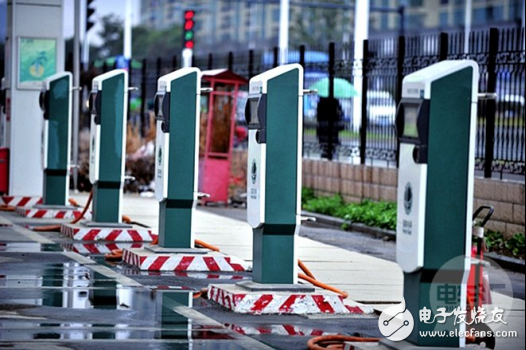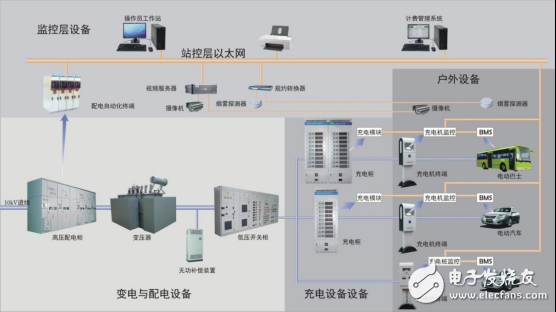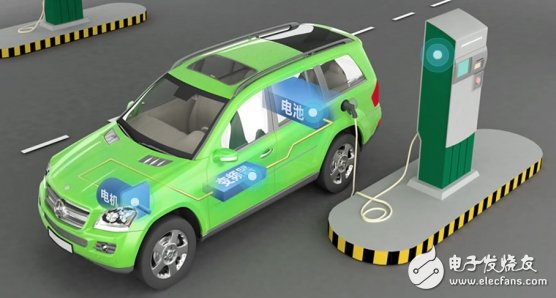According to relevant reports, the state plans to build 900,000 charging piles this year. According to incomplete statistics, 15 provinces and 45 cities across the country have introduced policies to support the construction of charging facilities. The lack of charging stations has brought new problems to the grid.
According to the "12th Five-Year Special Plan for the Development of Electric Vehicle Technology", 400,000 charging piles and 2000 charging and replacing stations will be built by the end of 2015. As of the end of 2014, only 28,000 charging piles and 723 charging stations have been built nationwide. The ratio of new energy vehicles to charging piles is about 4:1, far from the standard of 1:1. The "13th Five-Year Plan" formulated by the state has increased the construction scale of charging piles and charging stations. By 2020, the number of charging piles will reach 4.5 million, and the number of charging and replacing stations will increase to 12,000.

In such a fast-growing industry, it is necessary for the state to introduce new standards to regulate the industry and improve resource utilization in order to achieve efficient development.
On December 28, 2015, the General Administration of Quality Supervision, Inspection and Quarantine, the National Standards Committee, the United Nations Energy Bureau, the Ministry of Industry and Information Technology, and the Ministry of Science and Technology issued five new national standards for electric vehicle charging interfaces and communication protocols in Beijing. The new standard has been in 2016. It will be implemented on the 1st of the month, but is the implementation of the new standard really solving the problem of the charging pile industry?
In terms of safety, the new standard has added functions such as charging interface temperature monitoring, electronic lock, insulation monitoring and bleeder circuit, refining the safety protection measures for DC charging vehicle end interfaces, and explicitly prohibiting unsafe charging mode applications, which can effectively avoid Accidents such as electric shock, equipment burning, etc., ensure the safety of electric vehicles and users during charging.
In terms of compatibility, the AC-DC charging interface type and structure are compatible with the original standard. The new standard modifies the size of some contacts and mechanical locks, but the old and new plugs and sockets can cooperate with each other. The electronic locking device added by the DC charging interface does not affect The electrical connection between new and old products, users only need to update the communication protocol version, the new power supply equipment and electric vehicles can guarantee the basic charging function.
First look at the schematic diagram of the charging pile system:

The charging pile system is composed of five major systems: substation and distribution equipment system, charging equipment system, outdoor equipment system and monitoring layer equipment system. The high-voltage voltage transmitted from the power grid is reduced to a low-voltage voltage through the high-voltage power distribution and the transformer, and is transmitted to the charging pile through the low-voltage switch, and then the current is rectified, filtered, and amplified by the charging cabinet, so that the voltage and current reach the required value.
The new standard only makes the industry more standardized, standardized and unified, but this is mainly for outdoor equipment systems, that is, charging pile interfaces, etc., there is no requirement for power quality, so the charging pile industry often misses the problem of power quality. Such as common imbalance, flicker, fluctuations, harmonics, etc., but harmonic pollution is among the first.

In the process of automobile battery production, a three-phase bridge rectifier device composed of thyristor is generally used as a chemical conversion device, but these devices cause a high-power power electronic nonlinear load on the power grid, thereby causing a large amount of harmonic pollution generated by the power grid. Harmonic problems are more direct to the harmonics of the charging industry:
1. For the outside of the power system, harmonics will cause serious interference to communication equipment and electronic equipment, which is particularly likely to cause cost calculation errors, resulting in cost deviation from the actual.
2. Harmonics can cause local parallel resonance or series resonance of the power system, which will amplify the harmonic content and cause the capacitors and other equipment to burn out.
3. Harmonics can also cause relay protection and automatic device malfunction, which makes the energy metering disorder.
4. Harmonics reduce the efficiency of production, transmission and utilization of electrical energy, overheating electrical equipment, aging insulation, shortening service life, and even malfunctioning or burning.

Mainly deal with the following four aspects:
1. Add dynamic reactive power compensation device to improve the ability of the power supply system to withstand harmonics.
2. Install filtering devices (including passive filtering and active filtering devices).
3. Unified charging pile standard, select the core control module with anti-interference ability.
4. Strengthen harmonic management according to national standards and install online power quality monitoring devices.
How to choose an online power quality monitoring device?The online power quality monitoring device must be designed and produced in accordance with the technical specifications of the DL/T1227-2013 power quality device and the general requirements of the GBT 19862-2005 power quality monitoring equipment, and the products required to pass the authoritative certification may ensure the reliability of the equipment and Versatility.
ZLG Zhiyuan Electronics E8000 series online power quality monitoring device has passed the Cape Lab type test certification and IEC61850 protocol conformance test certification, and the accuracy is in full compliance with IEC61000-4-30A standard. Fully coping with the common harmonics, flicker, fluctuation, imbalance and other issues of power quality, it has passed the network test of Guangdong, Guangxi and other local electric power institutes, and is widely used in substations, high energy-consuming enterprises and photovoltaic industry in all parts of the country. Monitoring and analysis of on-site power quality in industries such as charging piles.

KW4-Basic Miniature Micro Switch
Features
â—† Small Compact Size,Global safety approvals
â—† Long life & high reliability.
â—† Wide Range of wires Terminals.
â—†Variety of actuator and terminals
â—†Customized Designs
â—†Widely used in household appliances, electric force, telecommunications, machine tool, vessel, textile, printing, Mining machine, Mustic Instrument, etc.
Micro Contact Switch,Mushroom Button Switch,3 Pin Micro Switch,Basic Miniature Micro Switch
Ningbo Jialin Electronics Co.,Ltd , https://www.donghai-switch.com